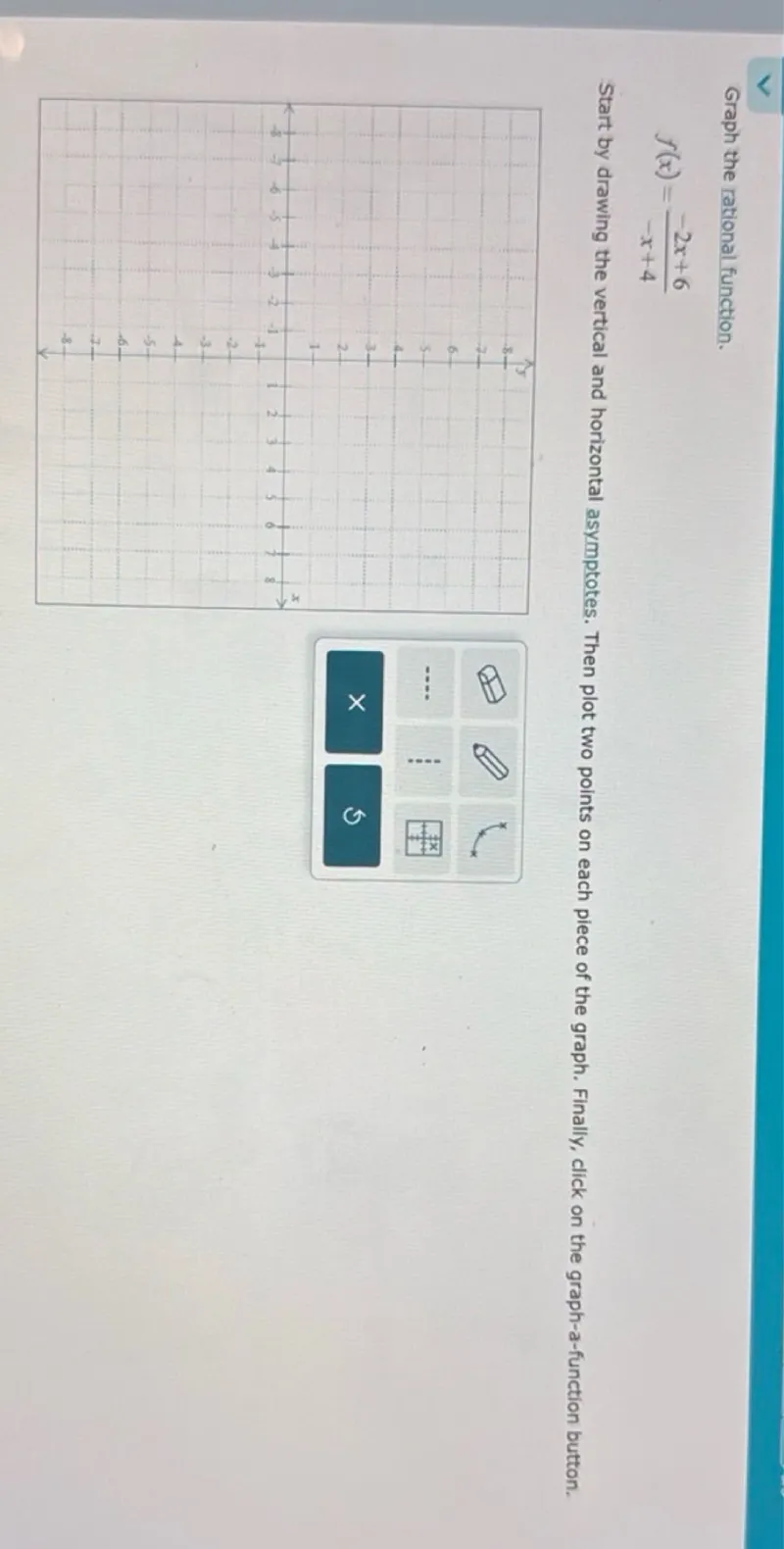Questions: Graph the rational function. f(x) = (-2x + 6) / (-x + 4) Start by drawing the vertical and horizontal asymptotes. Then plot two points on each piece of the graph. Finally, click on the graph-a-function button.

Transcript text: Graph the rational function.
\[
f(x)=\frac{-2 x+6}{-x+4}
\]
Start by drawing the vertical and horizontal asymptotes. Then plot two points on each piece of the graph. Finally, click on the graph-a-function button.





